Master Pool Valve Basics for Efficient Water Flow Control
April 22th, 2024
April 22th, 2024
Opening the gate to pool maintenance knowledge often begins with understanding the silent yet essential players: pool valves. These unassuming components hold the power to dictate water flow, ensuring that each corner of your pool receives the attention it needs, whether for heating, cleaning, or simply keeping the water fresh and inviting.
I once stood in my backyard, hose in one hand, scratching my head with the other, baffled by the intricate network of pipes and levers that comprised my pool's plumbing system. Much like discovering the secret language of an ancient script, getting to know pool valves transformed my maintenance routine from a chore into a manageable task.
Each valve serves a unique purpose: the diverter valve determines where water flows, the check valve prevents backflow, while the ball valve offers straightforward open or shut functions. Understanding their roles can significantly enhance your pool's efficiency and longevity. For instance, the diverter valve allows you to direct water solely to the solar heater during cooler months, optimizing warmth without additional costs.
As you become familiar with these components, you’ll find that troubleshooting issues becomes less daunting. When a pool's circulation system falters, a simple adjustment of a valve might be the key to restoring harmony. Thus, embracing this knowledge transforms not just your pool but also your confidence in managing it. Welcome to the world where understanding these silent sentinels leads to a seamless and enjoyable pool experience.
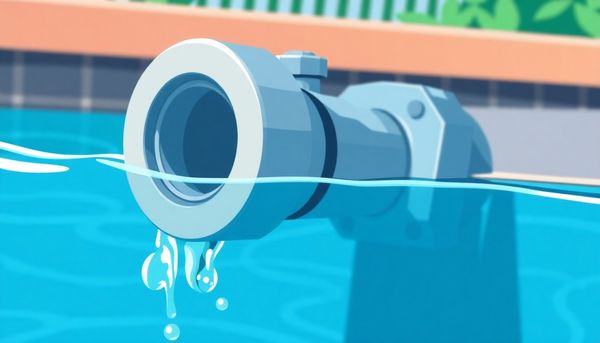
Exploring the inner workings of pool systems, pool valves emerge as unsung heroes that orchestrate the smooth flow of water. Imagine standing by your pool, a peaceful blue oasis. Beneath that tranquility lies a complex network of pipes and valves, each playing its part. Take the multiport valve, for example; it’s the maestro of the filtration symphony. Positioned strategically on the filter, this valve lets you control the water's journey, deciding whether it should cleanse itself through backwashing or bypass the filter for a recirculation spree. It’s fascinating how such a small component dictates the cleanliness of your pool.
Now, consider the diverter valves, the switchboard operators of your aquatic world. With options of two-way or three-way configurations, they can manipulate the water’s path like veteran traffic cops, ensuring that flow goes exactly where it's intended. Remember that time you wanted to clean just the skimmer or drain without disturbing the rest? That’s a diverter valve working its magic, giving you the precise control you crave.
And what about those clever check valves? These are the guardians, preventing backflow that could wreak havoc on your intricate system. Whether protecting delicate equipment from concentrated chlorine or ensuring a spa's water levels remain unaltered, they are the silent sentinels maintaining order. Embrace these critical components, understanding that each valve not only keeps your pool pristine but also empowers you with mastery over your watery domain.
Water is a creature of habit, always seeking the path of least resistance. In pool management, guiding this flow is essential to maintaining pristine waters. Enter the unsung heroes of pool plumbing: valves. These mechanisms, though often overlooked, play a pivotal role in directing water precisely where it needs to go, whether through the filter to trap debris, the heater to warm chilly water, or simply back to the pool once it's been cleaned.
Consider the diverter valve, a versatile tool in the pool owner's arsenal. It can redirect water flow, allowing for nuanced control over which parts of your pool system receive water at any given time. Installing a 3-way diverter, for instance, gives you the flexibility to adjust the flow between your pool and spa, ensuring each maintains its own ideal conditions without unnecessary mix-ups.
Equally crucial is the check valve, a silent guardian against unwanted backflow. Picture your chlorinator diligently adding chlorine to your pool; without a check valve, turning off the pump could allow concentrated chlorine to creep back into your heater or filter, causing potential damage. Similarly, check valves keep hot tub water from seeping into the pool, preserving the delicate balance of both environments.
Lastly, for those embracing modern convenience, valve actuators transform manual labor into fingertip control. By automating valve adjustments, pool maintenance becomes a seamless part of your daily routine, letting you enjoy your oasis with minimal fuss. Mastering these valves means mastering your pool’s health and efficiency.
Understanding the nuances of a multiport valve turns pool maintenance from a chore into an art. This versatile piece of equipment is like the conductor in an orchestra, directing water flow to achieve various tasks seamlessly. It's positioned on your pool filter and acts with precision, whether it's cleaning, rinsing, or backwashing the filter, or sending water to waste.
Take, for instance, a day when you're vacuuming your pool. You'd want the debris-laden water to bypass the filter and exit via the waste port. This is where the multiport valve shines, allowing you to direct water exactly where it needs to go without unnecessary detours. On a sunnier note, if you've added a flocculant to settle particles, you might choose to recirculate water without filtering, letting the chemistry do its work.
Beyond everyday uses, this valve has a winter setting to prevent freezing damage, safeguarding your pool during colder months. It's not just about moving water; it's about strategic control. Think of it as setting your pool's mode for action or rest, ensuring every part of your system operates optimally.
As you become familiar with its settings—filter, rinse, waste, recirculate, closed—you'll soon find yourself mastering the multiport valve’s functions with the confidence of an expert, ensuring your pool remains a pristine oasis.
When it comes to maintaining the delicate equilibrium of your pool's water system, check valves are the unsung heroes. Think of them as the diligent sentinels, preventing water from wandering back into areas it has no business being. Their role becomes particularly crucial when the pool pump is turned off, ensuring that all the grime and contaminants stay out of the water that should be pristine.
Check valves are indispensable when dealing with automatic chlorinators. Positioned strategically between the chlorinator and preceding equipment like a filter or heater, these valves safeguard sensitive components from the caustic effects of undiluted chlorine. Without this protection, your pool’s heater or filter could suffer damage, potentially leading to costly repairs or replacements.
Spa owners can also appreciate the reliability check valves offer. With a higher water level than the pool itself, a spa without a check valve might drain into the pool once the pump stops, disrupting the chemical balance and water levels of both.
Water features, such as fountains, rely on check valves to keep their dedicated reservoirs from emptying back into the pool when not in use. This not only preserves the visual appeal of your backyard oasis but also makes sure the plumbing system remains in tip-top shape.
For those harnessing the power of solar panels to heat their pools, check valves are a must. They prevent the reverse siphoning of water, ensuring the system remains full even when the pump is off, so you can bask in the sun’s warmth without interruption.
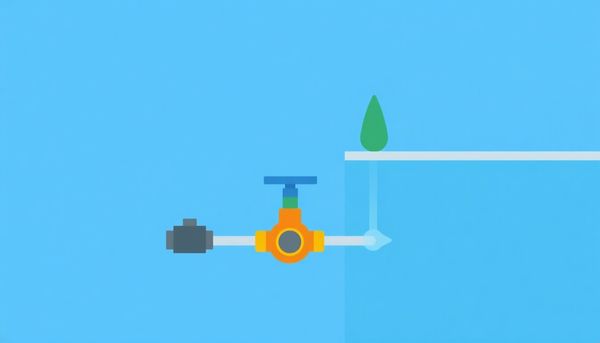
Mastering the flow of water in your pool is akin to orchestrating a symphony, where each valve plays its part with precision. Consider the multiport valve, an unsung hero that sits atop your filter like a conductor. Its role? Directing water seamlessly through various functions, be it backwashing your filter or bypassing it entirely during specific treatments like adding a flocculant.
Every valve type has its distinct purpose. Diverter valves, with their two-way and three-way variations, let you channel water exactly where you need it—think of them as the traffic cops of your plumbing system. They allow you to decide whether more water should head to the skimmer or the main drain, ensuring your pool's circulation remains efficient and effective. When you’re dealing with complex setups like solar heating or hot tubs, check valves become indispensable. They guard against the unwanted backflow of water, which could otherwise wreak havoc by diluting chemicals or disturbing carefully balanced temperatures.
Check valves are particularly vital in setups involving automatic chlorinators or solar panels. These devices need protection from backflow, which can introduce concentrated chemicals where they're unwelcome or allow gravity to work against you when the pump stops.
Navigating this intricate system of valves might seem daunting initially, but once you grasp their functions, you'll appreciate the harmony they bring to your pool's ecosystem. Just like a seasoned musician learns their instrument, understanding these valves ensures your pool remains a clean, sparkling oasis.
Understanding how to manage your pool valve settings is much like mastering the art of water ballet—it's all about precision and timing. Each valve plays a unique role in directing the flow of water, determining whether it's heading through a filter, heating system, or back into the pool. Knowing when and how to adjust these settings can make all the difference in the clarity and cleanliness of your pool.
Consider the multiport valve, often positioned at the heart of your filter system. This versatile piece isn't just for backwashing; it can reroute water for tasks like vacuuming or prevent freezing during the winter months. By rotating its handle, you can immediately change the water's route, ensuring it flows exactly where you need it to. Remember the time you struggled with a murky pool? A simple switch to the “recirculate” setting can sometimes clear that right up.
Diverter valves are another critical component, especially if your setup includes features like a spa or waterfall. These valves offer flexibility by allowing water to be split or shut off to specific areas. Imagine your spa needing a quick fill-up; a turn of the diverter valve ensures the water flows directly there without impacting the rest of your pool system.
Finally, the check valve serves as your pool's security guard, preventing unwanted backflow. This is crucial when protecting equipment from damage, especially those delicate chlorinators and heaters.
Embracing the nuances of each valve setting not only improves your pool’s performance but also enhances your swimming experience.
Water backflow can turn your pristine pool into a murky mess. Without proper management, unfiltered water might find its way back into the pool, bringing along unwanted debris and bacteria. Pool valves are the unsung heroes in this battle against backflow, safeguarding the quality and clarity of your swimming haven.
Consider your pool's plumbing system as a well-choreographed dance, where each valve plays a crucial role. Multiport valves, for instance, allow you to channel water through the filter, ensuring only clean water returns to the pool. Particularly during maintenance, these valves let you backwash the filter, flushing out the accumulated gunk instead of allowing it to sneak back into your pool.
Check valves are another vital player. Have you ever worried about a power failure or shutting off the pump? These valves prevent water from flowing backward. Positioned strategically, they protect sensitive equipment like chlorinators and heaters from exposure to concentrated chemicals. In essence, check valves act as gatekeepers, maintaining the integrity of your pool’s plumbing and preventing costly damage.
In my own backyard, I learned the lesson of backflow the hard way. After a particularly stormy night, I found my once-sparkling pool clouded with debris. It was a check valve malfunction that allowed the dirty water to reverse. Since then, ensuring proper valve function has become a non-negotiable part of my pool maintenance routine.
Understanding and maintaining these critical components not only keeps your pool sparkling but also ensures the longevity of your pool’s equipment. Treat your pool valves with care, and they’ll reward you with effortless, enjoyable swimming for years to come.
Automating valve operations transforms pool management from a chore into a seamless experience. Imagine lounging poolside, and with just the press of a button, you can switch up the water flow, activate the spa, or kickstart the waterfall feature without moving an inch. Valve actuators make this possible. These nifty devices attach to diverter valves and connect to your pool’s control system, allowing you to manipulate water flow remotely.
How does this magic work? The actuators are wired to your pool's control box, which means that instead of manually twisting knobs or handles—sometimes a frustratingly tedious task—you simply use a control panel. This setup is not just for convenience; it ensures precision in managing water flow, making sure every part of your pool system operates optimally.
Years ago, I had to sprint to the pool equipment area each time I wanted to switch from pool to spa mode. It was cumbersome, especially when entertaining guests. Installing valve actuators changed the game. Now, a simple button press sets everything in motion; it's like having a pool assistant.
Automating your valves isn't just about convenience—it's about enhancing the longevity and efficiency of your pool system. By reducing the manual handling of valves, the wear and tear diminish significantly, extending their lifespan. For anyone looking to embrace modern pool care, valve automation offers a blend of technology and ease that is hard to resist.
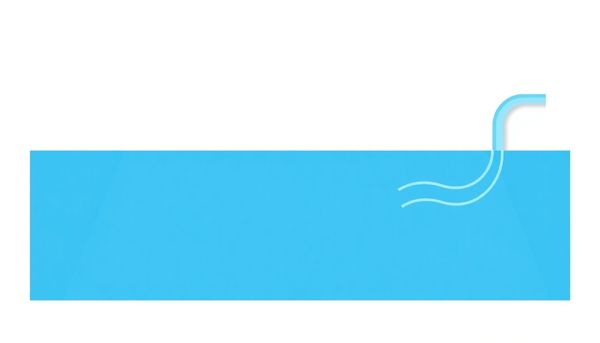
The realm of pool maintenance is filled with gadgets promising ease and efficiency. Among these, valve actuators quietly revolutionize the way pool owners manage water flow. Instead of wrestling with diverter valve handles and taking a trek to the equipment area, consider this modern marvel: a device that automates those repetitive tasks.
Have you ever wished you could switch between pool settings without leaving your lounge chair? Valve actuators grant this luxury. By mounting these compact devices on diverter valves and connecting them to your pool’s control system, you gain the power to redirect water flow with the push of a button. Whether you're adjusting the skimmer or adjusting the hot tub temperature, it all becomes a seamless endeavor.
This setup not only simplifies day-to-day pool operations but also enhances the integration of other water features. Consider the joy of activating your pool's fountain or waterfall remotely, transforming your backyard into a dynamic oasis with minimal effort. It's akin to having a remote control for your entire pool system.
Valve actuators excel in efficiency, saving time while also ensuring precise control over water flow. If you're still relying on manual adjustments, it might be time to embrace this piece of automation. After all, with the speed of life today, convenience isn't just a luxury—it’s essential.
In the world of pool maintenance, convenience is king. When managing a pool’s plumbing system, manually adjusting diverter valves can feel like an ancient ritual that’s out of place in our modern, automated lives. Valve automation changes the game by transforming this task into a simple button press, streamlining your pool maintenance routine. Imagine enjoying your morning coffee on the patio while adjusting water flow to the hot tub with just a tap on your smartphone. That’s the kind of luxury valve actuators bring.
The installation of valve actuators is straightforward: they sit atop existing diverter valves and connect to your pool’s control system. With this setup, you can manage water flow from anywhere, whether you’re lounging poolside or halfway across the world. Perhaps you have a solar heating system that requires frequent adjustments based on sunlight availability. With valve automation, you can optimize water circulation through solar panels without lifting a finger. This ensures your pool enjoys consistent temperatures without the hassle.
Moreover, automation adds a layer of precision to your pool care routine. It’s not just about ease; it’s about accuracy. Automatically adjusting water features or switching between pool and spa modes ensures that your pool system operates efficiently, conserving energy and resources. Embrace this technological advancement to minimize manual labor and maximize your leisure time. Effortless pool upkeep is no longer a distant dream—it’s an immediate reality with valve automation.
Navigating the intricate maze of pool plumbing might seem daunting, but mastering water-flow control transforms a simple pool into a finely-tuned aquatic experience. These unassuming valves hold the power to direct, pause, and regulate the movement of water, ensuring your pool remains a haven of cleanliness and relaxation.
Consider the multiport valve, a versatile component usually situated on the filter. It allows you to choose how water interacts with the filter—whether it's filtering debris out, backwashing to clean the system, or bypassing the filter altogether in a recirculation mode. This adaptability is your ally, especially when dealing with stubborn cloudiness in the pool or when seasonal maintenance requires line clearing.
Turning to diverter valves, these devices deftly manage the water's journey, whether it's a simple 2-way turn to control flow direction or a more complex 3-way setup that channels water between different paths. This flexibility is crucial when manipulating water between your pool and attached spa, ensuring smooth operation without mixing or wasting resources.
Not to be overlooked, check valves stand guard to prevent backflow, a silent protector of your investment. Whether safeguarding delicate pool equipment from highly concentrated chlorinated water or maintaining the proper water levels between connected features, these valves ensure stability and safety.
Embrace the empowerment that comes with understanding and harnessing these small but mighty pool components. They’re the unsung heroes that keep every splash, swim, and soak a perfectly controlled pleasure.
Understanding your pool’s plumbing is only half the battle; the real magic lies in optimizing its maintenance. With a well-maintained system, not only does your pool stay pristine, but its lifespan extends significantly. It all starts with appreciating those crucial pool valves. They may seem small, but their role in regulating water flow ensures your pool’s health and vitality.
Imagine walking outside to find your pool looking murky and uninviting. Often, this signals a valve issue, such as water not being properly diverted through the filter. Regularly checking valve positions can save you time and frustration. When you’re moving water through the diverter valves, ensure they’re set correctly to prevent backflow, which could otherwise lead to debris re-entering the pool. A swift adjustment can maintain that crystal-clear appearance.
Switching to automatic valve actuators can also streamline your maintenance routine. These devices allow you to control water flow with the touch of a button, meaning you can switch from pool mode to spa mode without breaking a sweat. It's like having a personal assistant for your pool!
Lastly, early detection of wear and tear is vital. Valves can develop leaks or blockages over time. Taking the time to inspect and, when necessary, replace aging valves can be the difference between seamless operation and costly repairs. By keeping these elements in check, you ensure your pool remains a sparkling haven throughout the year.
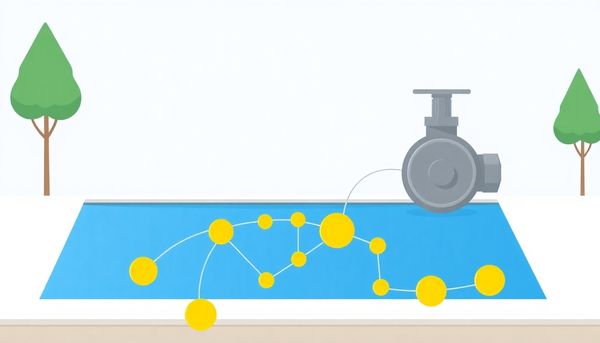
Navigating the world of pool maintenance often feels like learning a new language, especially when it comes to the intricacies of water flow. Understanding how to control water features efficiently can transform your pool experience. Picture your pool on a sweltering summer day, the gentle splash of a water fountain adding both aesthetic charm and soothing sound. Yet, ensuring these features work seamlessly requires a grasp on pool valves.
Take, for example, the diverter valve. Its magic lies in its ability to direct water flow precisely where you desire — from the pool to a shimmering waterfall or a poolside grotto. With a simple turn of the handle, you can adjust the water's journey, allowing for full or partial flow, or even shutting it off completely. This flexibility is crucial, especially when you want to engage or disengage specific water features without altering the pool’s primary circulation.
Moreover, check valves play an unsung yet vital role in maintaining the health of your pool's ecosystem. Imagine leaving your water feature off for maintenance, without a check valve, the water would potentially flow back, disrupting the balance and cleanliness of your pool. That's why installing these valves can be a lifesaver, keeping the water where it belongs and ensuring that your features are always ready to impress.
Embracing these details not only elevates poolside aesthetics but also prolongs the life of your equipment. Understanding how to efficiently manage water flow with the right set of valves is the secret to a pool that dazzles and delights all season long.
In the intricate dance of pool maintenance, valves play a starring role, ensuring water flows smoothly and purposefully. While they might seem like just another part of the plumbing puzzle, understanding the distinct types of pool valves can significantly impact the efficiency of your pool's system.
One of the most versatile options is the multiport valve. This little workhorse found on filters is like a Swiss army knife for your pool’s water. It can backwash, rinse, or even bypass the filter entirely when needed. This flexibility is particularly handy during cleaning or maintenance tasks, allowing you to isolate parts of the system without disrupting the entire flow.
Next, we meet the diverter valves, the navigators of the pool world. Available as 2-way or 3-way valves, they deftly redirect water, ensuring it travels precisely where you want it. Picture needing to balance the flow between a skimmer and a drain—these valves handle that with ease. Whether you’re reducing flow for maintenance or enhancing it for optimal circulation, diverter valves are your go-to guides.
Check valves, on the other hand, are the guardians, preventing backflow that could wreak havoc on your equipment. For instance, they’re essential when using automatic chlorinators, ensuring potent chlorine doesn’t sneak back and damage other components. They’re also crucial in maintaining the separate water levels between a pool and a connected spa.
Valve actuators bring a touch of modern convenience, automating the process and allowing control at the push of a button. No need to brave the elements every time you need to adjust water flow—these technological wonders do it for you, seamlessly integrating with your pool’s control system.
Understanding these valve types can transform your pool care routine, ensuring efficient water management and safeguarding your equipment. Dive into the nuances of each valve, and you’ll find a more harmonious, hassle-free pool experience awaits.
Navigating the world of pool maintenance can feel like a journey through a complex maze of pipes and valves. Yet, there's something truly fascinating about transforming this intricate web into a seamless, automated system. Automating water-flow control isn't just a convenience; it's a game-changer in pool management.
Consider the scenario where you need to switch your system from pool mode to spa mode. Manually adjusting diverter valves, especially in the sweltering summer sun, isn’t exactly the most glamorous chore. This is where valve actuators step in, transforming the process with simplicity and ease. With these nifty devices, mounted directly atop diverter valves, you can control water redirection effortlessly through your pool’s control panel. Whether you're firing up the spa for a relaxing evening or activating a water feature to impress your guests, it’s all just a button press away.
In my own backyard oasis, the addition of valve actuators was akin to discovering a hidden superpower. I no longer had to juggle multiple valve positions manually; instead, my fingertips did all the work. Not only does this save time, but it also ensures precision, reducing the risk of incorrectly adjusted flows that could negatively impact the system's overall efficiency.
Incorporating automation into your pool’s plumbing system doesn't just simplify life; it enhances the reliability and performance of your water management. And that’s a splash worth making.
In the intricate world of pool maintenance, preventing water backflow is a critical aspect that often goes unnoticed until a problem arises. Just like how one would ensure that milk doesn't spill over while pouring a glass, the same principle applies to managing water flow in your pool system. Check valves play the unsung hero in this scenario, ensuring that water flows in the right direction and never backtracks, which could cause contamination or equipment damage.
For instance, an automatic chlorinator is designed to add chlorine just before the water re-enters the pool. Without a check valve, when the pump stops, concentrated chlorine could seep back into the system, posing a risk of damage to your filter or heater. Imagine that—a tiny valve saving you from costly repairs or replacements.
Similarly, if you’ve got a hot tub adjoining your pool, the last thing you want is the spa water, rich with different chemicals, draining back into the main pool and upsetting the delicate water chemistry balance. Check valves ensure each body of water stays where it belongs, maintaining harmony between your pool and spa.
Water features and solar heating systems also rely on these valves to keep everything flowing smoothly. When the pump shuts off, gravity can cause water to reverse its flow, potentially draining essential components like solar panels. Installing check valves prevents such mishaps, ensuring your heating system remains efficient and your water features stay picture-perfect.
In the intricate dance of pool maintenance, check-valves play a quiet yet crucial role. They are the unsung heroes ensuring that all the effort put into cleaning and heating your pool isn't undone by mischievous backflow. Think of a check-valve as a one-way gate that firmly insists water flow only in the intended direction. This is essential in maintaining the pristine state of your pool water and protecting delicate equipment from unwanted surprises.
Consider your automatic chlorinator; it diligently doses your pool with chlorine to keep bacteria at bay. However, without a check-valve, once the pump stops, that concentrated chlorine could seep backward, attacking filters and heaters that aren’t designed to handle such a potent mix. A well-placed check-valve ensures that the chlorinated water stays where it should until it’s safe to move forward again.
Now, imagine your elegant hot tub perched beside the pool. It sits slightly elevated, a serene oasis. When its pump rests, the water eagerly seeks equilibrium. Here, a check-valve steps in, keeping the spa water from cascading back into the pool and upsetting the delicate balance of your water chemistry.
For those embracing solar heating, check-valves hold an even more critical function. They prevent solar-heated water from retreating from the rooftop panels when the pump is off, keeping the system efficient and your pool pleasantly warm. Each check-valve is a small investment that yields peace of mind, ensuring every component of your pool system operates harmoniously.
The magic of a perfectly functioning pool lies not just in its gleaming waters but in the intricate plumbing system that orchestrates the flow. One of the unsung heroes in this symphony is the check valve. This small but mighty component ensures that water flows in one direction, safeguarding your equipment from potential damage, and maintaining the harmonious flow of your pool ecosystem.
Consider a scenario with an automatic chlorinator, the final destination for water before it returns to the pool. The water, now mixed with potent chlorine, must not backtrack into other equipment like filters or heaters. A check valve placed strategically between the chlorinator and preceding equipment acts as a gatekeeper, preventing reverse flow and ensuring your devices are shielded from corrosive chlorine.
For those with an integrated spa, maintaining an equilibrium between the hot tub and pool water levels is crucial. A check valve ensures that when the spa pump halts, water doesn’t sneak back into the pool, keeping both systems’ chemistry in balance and your relaxation uninterrupted.
Water features and solar heating systems also benefit greatly from these valves. For instance, a fountain that ceases operation without a check valve risks draining its reservoir into the pool, undermining its aesthetic and functional purpose. Similarly, solar panels rely on check valves to circumvent gravitational backflow, keeping solar-heated water where it belongs.
In essence, check valves are the silent sentinels of your pool, ensuring that each part of your system operates smoothly and efficiently. Embracing their role in your pool maintenance strategy not only protects your investment but also enhances your swimming experience.
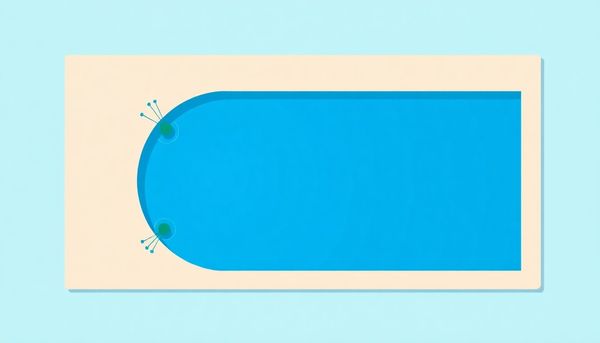
This article provided insights into maintaining your pool. Start your pool care journey today!
Want to become a pool maintenance expert? Our free Pool School course covers everything you need to know about pool care. From basic maintenance to advanced troubleshooting, you'll learn how to:
Join over 10,000 pool owners who have already transformed their pool care routine. Get started with our free Pool School course today!